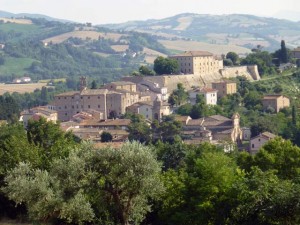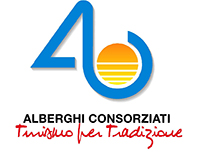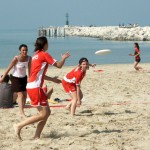San Lorenzo in campo

The origin of the city is linked to the Birth of Benedictine’s Monastery, built between 7th and 9th century, and to the namesake Abbey, an amazing gothic-roman style building.
In San Lorenzo you can find a very interesting and graceful theatre too, located inside Della Rovere Palace, and named Mario Tiberini theatre (named after a well known tenor who was born here in San Lorenzo); the theatre has been renovated in 1981 and since then many fresco designs in liberty style are foreseeable while participating to one of the many events (manifestation and old representations) organized in it.
In the same palace you can find the Archeological museum of the Suasa territory, divided in two main sectors: first floor dedicated to geologic, geomorphologic and paleozoologic section, and so related to the oldest history of Valle del Cesano and its human settlements; downstairs, on the other hand, you can go through most recent historical periods like Roman age in Valle del Cesano, medieval age and Abbey Birth.
Inside the museum you can see many fossils, rare findings and precious jewels: a roman grave, gold rings, vases and amphoraes, funeral urns and many others found out in Suasa area.
Last but not least, you’ll see a lounge dedicated to life and African culture in Sierra Leone, museum area born thanks to the will and passion of a missionary who, by the way in the years, collected many objects, foreseeable now in this Ethnographic African Museum, like wooden sculptures figuring idols, ceremonial masks, coins and embalmed animals.
The archeological museum of Suasa is open on Saturdays and Sundays (holidays included) from 4 pm to 8 pm, and in July/August also on Fridays. The entrance fee is 3,00 €. For further info please call 071966524.
Fratterosa
Fratterosa borough finds its root particularly in the old earthenware and terracotta manufacturing, in fact you can easily recognize in the inner village a specific “Way of Earthenware” starting with the masterpiece “Il Segno del Fuoco” (Fire symbol) from the sculptor Loreno Sgualci, passing through the shop of Beatrice Gaudenzi , who took the heritage of the Fabiani’s, family working on earthenware since 1730, and whose laboratory can still be be visited, as a perfect symbiosis of past and modern production techniques. A visit to old earthenware shop is also worth, as a mirror of the important local culture. Spread in the village you can then easily find various points of interest, both selling earthenware handcraft items and offering seminars workshops with lessons about earthenware manufacturing, to transmit the tradition.
The “Way of Earthenware” finds its natural conclusion in the old Santa Vittoria sumptuous building, formerly utilized as Cloister and now as Earthenware Museum, which contains most of the suggestive “cocci di Fratterosa”.















